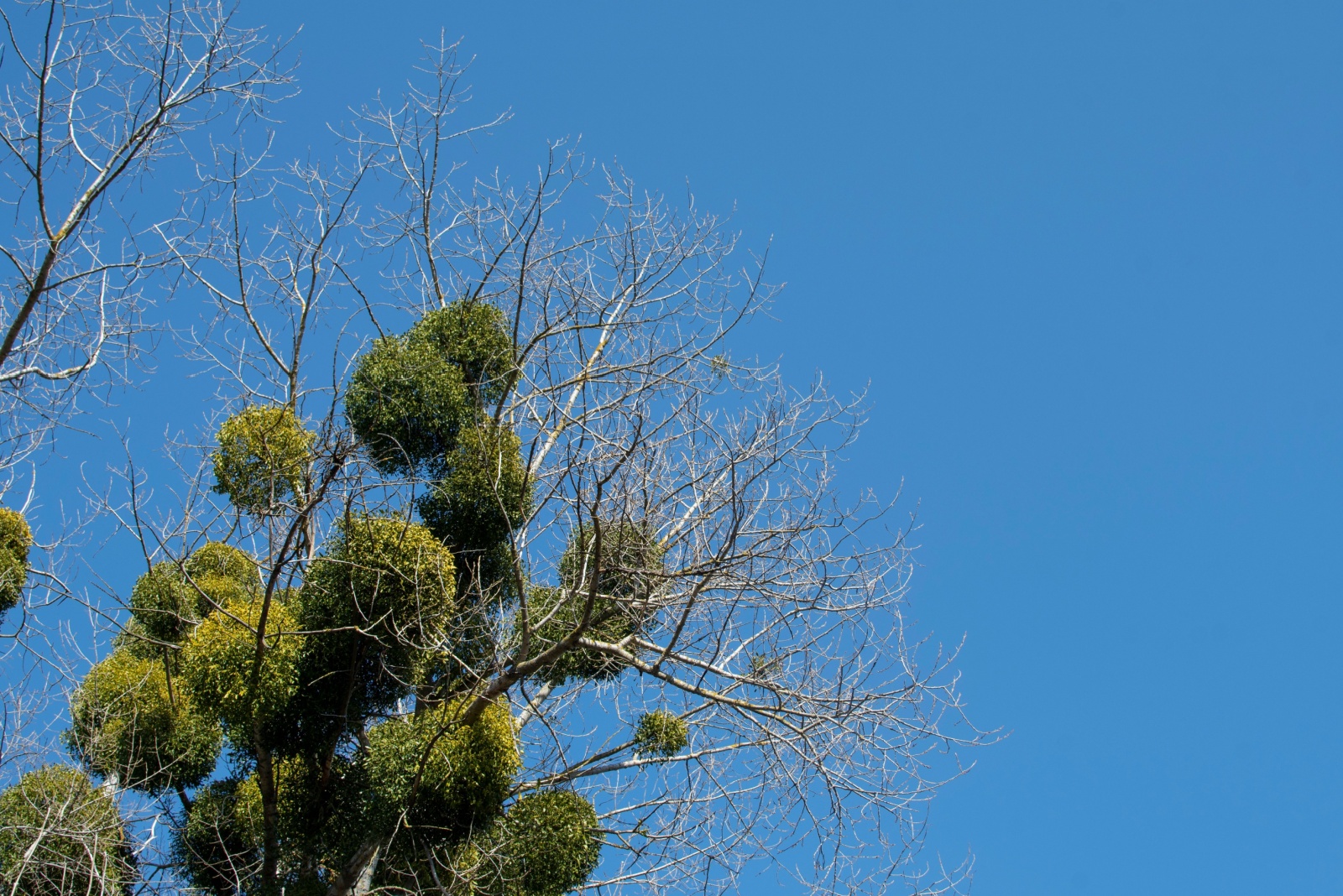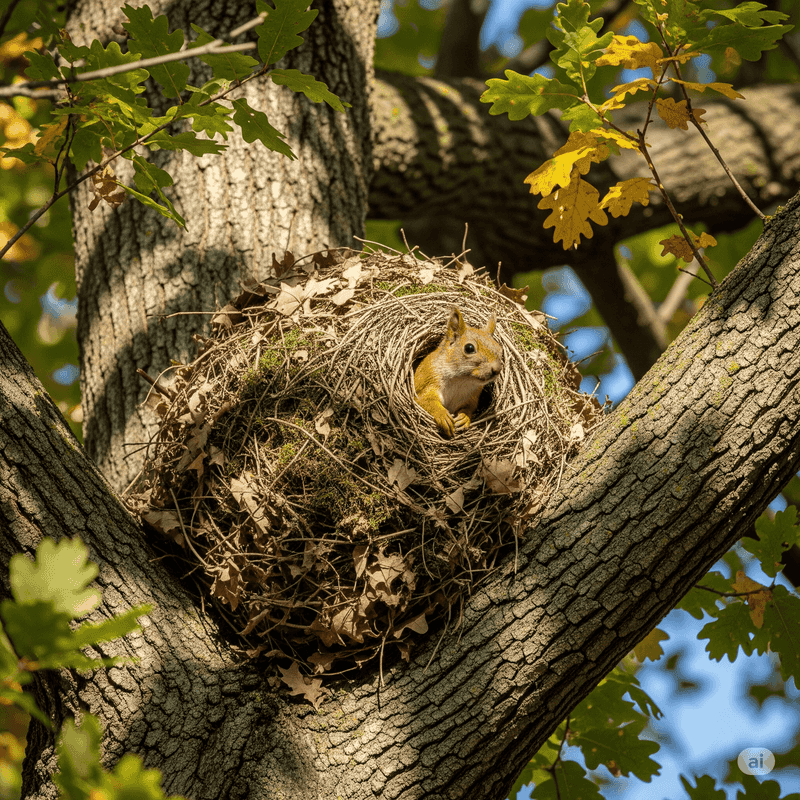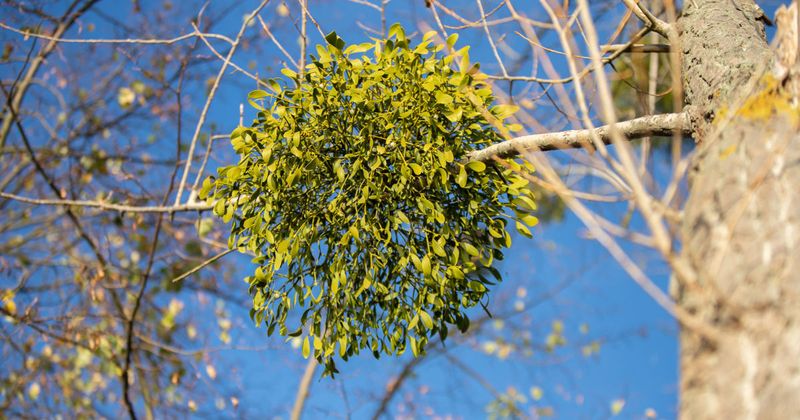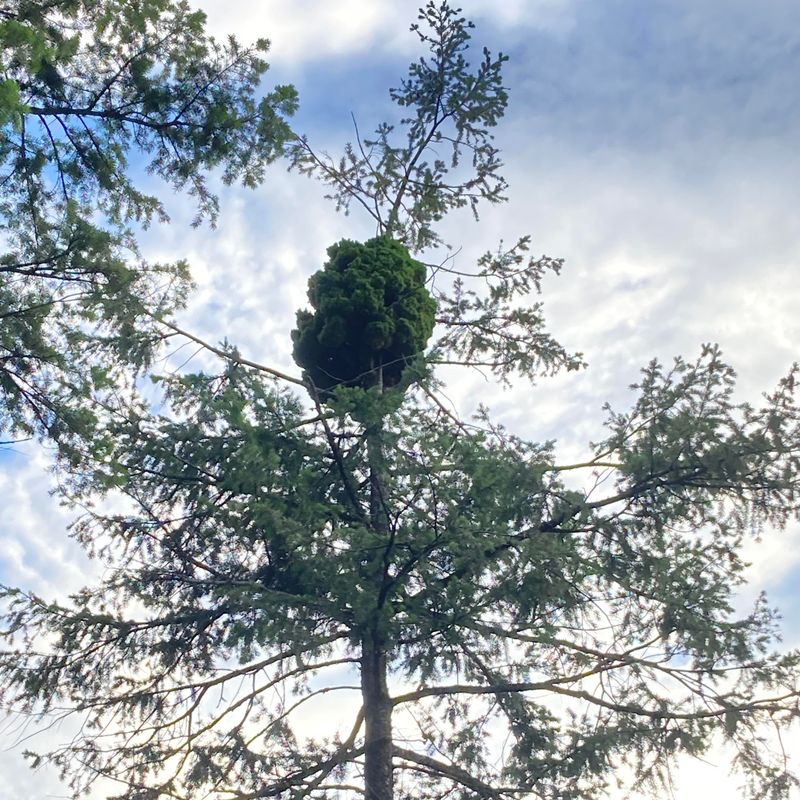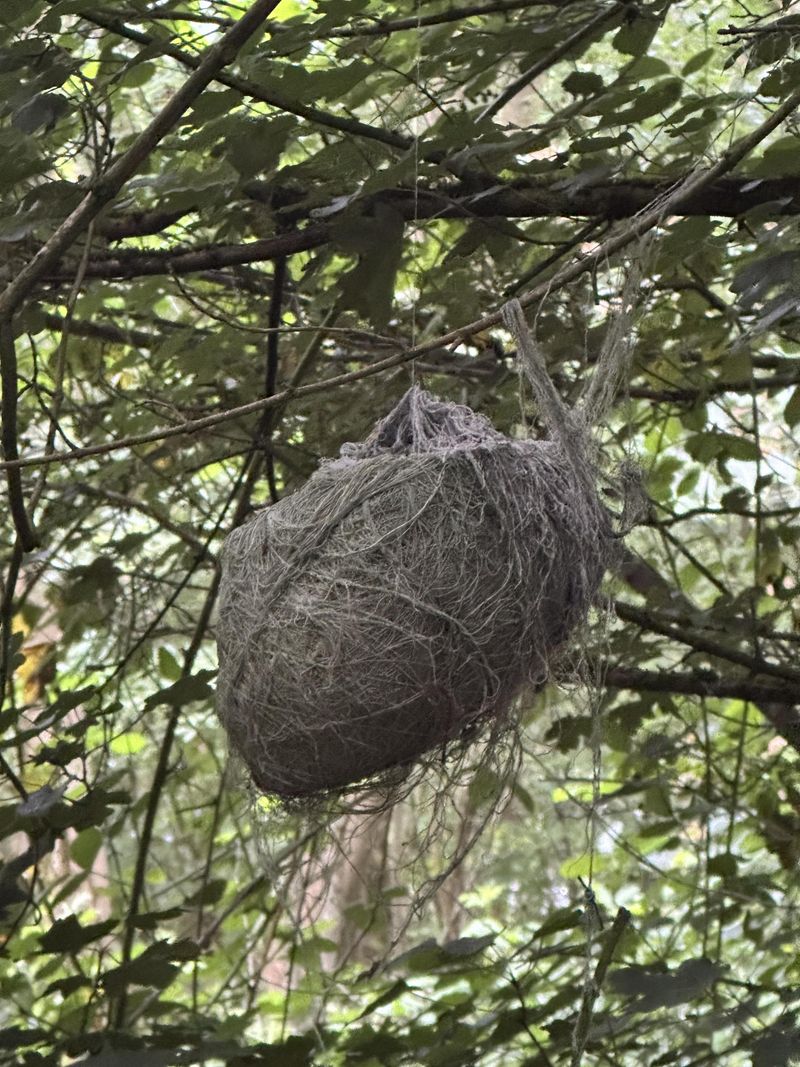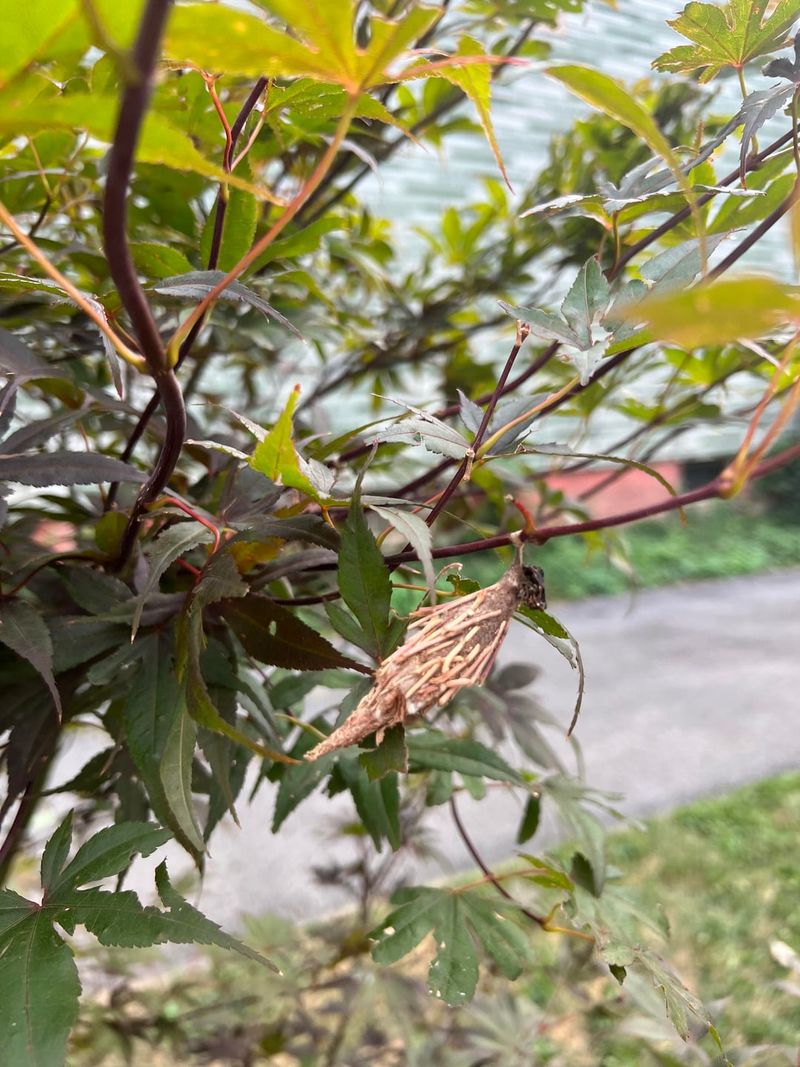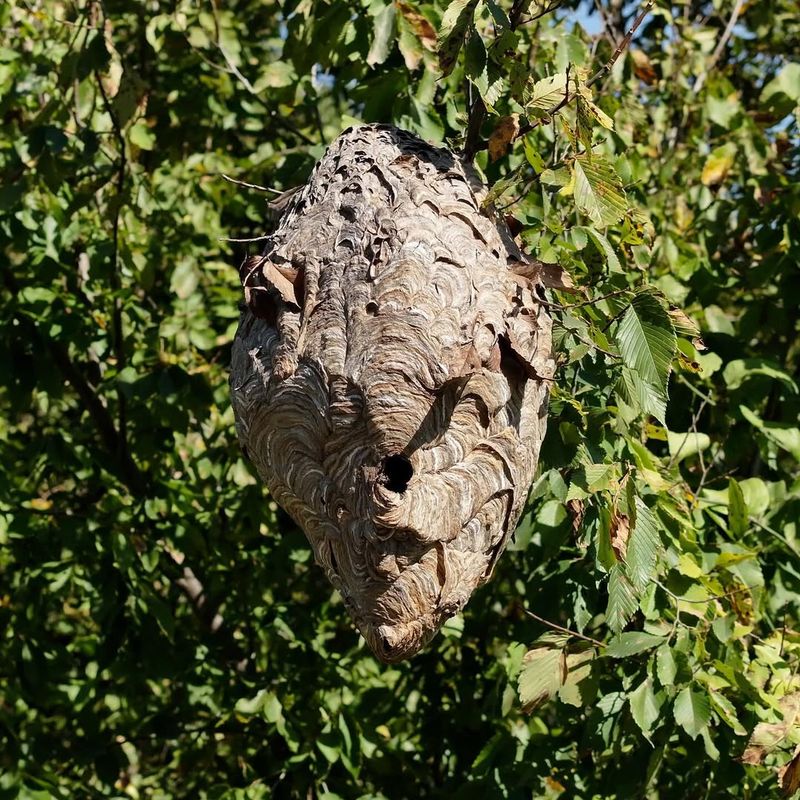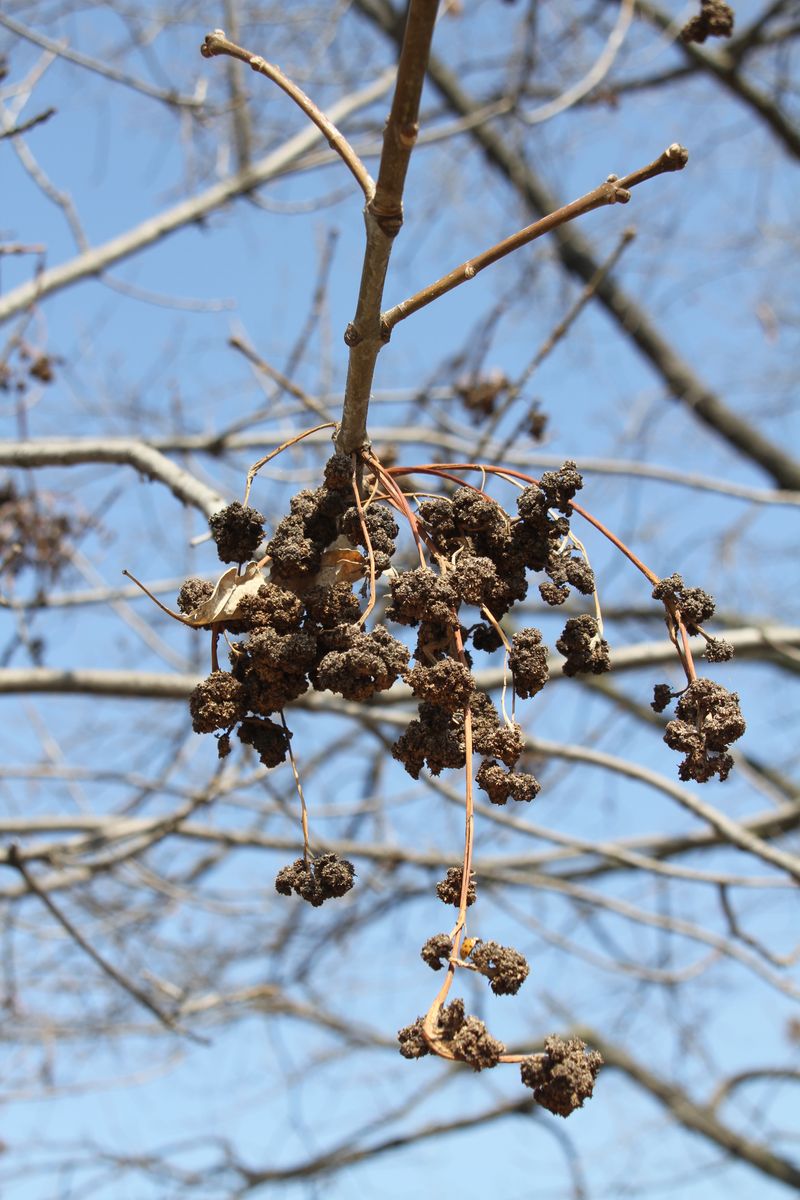Ever noticed a mysterious clump of leaves bunched up in the branches of your Colorado trees? It’s easy to assume it’s just debris or a random tangle of twigs, but these natural formations often have fascinating stories behind them.
Understanding what they really are can help you protect your trees and appreciate the wildlife sharing your backyard.
1. Squirrel Dreys (Nests)
Squirrels are master architects when it comes to building cozy homes high above the ground. These leaf balls, called dreys, are carefully constructed using twigs, leaves, moss, and bark strips woven tightly together.
In Colorado, you’ll often spot them in cottonwoods, pines, and aspens during fall and winter when the trees lose their leaves. The nests provide warmth and shelter from harsh mountain weather.
If you see one, leave it alone—squirrels work hard on these structures and often raise their young inside them.
2. Mistletoe Clusters
Not all leaf balls are harmless. Mistletoe might sound festive, but it’s actually a parasitic plant that latches onto tree branches and steals nutrients and water.
Colorado’s ponderosa pines and junipers are particularly vulnerable to these invaders. The clumps look like rounded masses of greenish leaves that stay visible year-round, even in winter.
Over time, mistletoe weakens trees, making them susceptible to disease and breakage. If you find mistletoe on your property, consider pruning infected branches to protect the tree’s health.
3. Witches’ Broom Disease
Witches’ broom is a peculiar growth pattern caused by fungi, viruses, or mites that trick trees into producing dense, tangled clusters of branches and leaves. These odd formations resemble old-fashioned brooms, hence the spooky name.
Colorado conifers like spruce and fir trees are especially prone to this condition. While witches’ brooms don’t usually kill trees, they do divert energy away from healthy growth.
Some gardeners actually find them charming and leave them as quirky natural decorations in their landscape.
4. Bird Nests From Larger Species
Birds like magpies, ravens, and crows build substantial nests that can easily be mistaken for leaf clumps from a distance. Unlike the delicate cup-shaped nests of smaller birds, these structures are bulky and built to last through Colorado’s unpredictable weather.
Magpies, in particular, create dome-shaped nests with roofs to protect their eggs from predators and storms. You’ll often find them in tall cottonwoods or pines near water sources.
Observing these nests during breeding season offers a wonderful opportunity to watch wildlife up close.
5. Bagworm Cocoons
Bagworms are sneaky little caterpillars that construct protective cases from silk and bits of the host tree’s foliage. These cases dangle from branches and can look like small, cone-shaped leaf bundles.
While less common in Colorado than in more humid regions, bagworms can still infest junipers, arborvitae, and spruce trees. Heavy infestations strip trees of their needles and leaves, causing serious damage.
Catching them early is key—handpick the bags in late fall or winter before the next generation hatches in spring.
6. Old Wasp Or Hornet Nests
That papery gray ball hanging in your tree might be an old wasp or hornet nest left behind from warmer months. These insects build their homes from chewed wood fibers mixed with saliva, creating a material that looks like paper-mâché.
By late fall in Colorado, most wasps have died off, leaving the empty nest to weather the winter. The queen usually abandons the nest and finds a new location each spring.
Old nests are generally safe to remove during winter when no insects remain inside.
7. Leaf Galls From Insects
Galls are abnormal growths that form when insects like wasps, aphids, or mites lay eggs inside tree tissue. The tree responds by creating these bizarre bulges, which can cluster together and resemble a ball of distorted leaves.
Colorado oaks and willows commonly develop galls, though they appear on many other species too. Most galls are harmless and won’t seriously damage healthy trees.
They’re actually fascinating examples of how insects manipulate plant biology for their own survival, turning trees into nurseries for their young.

